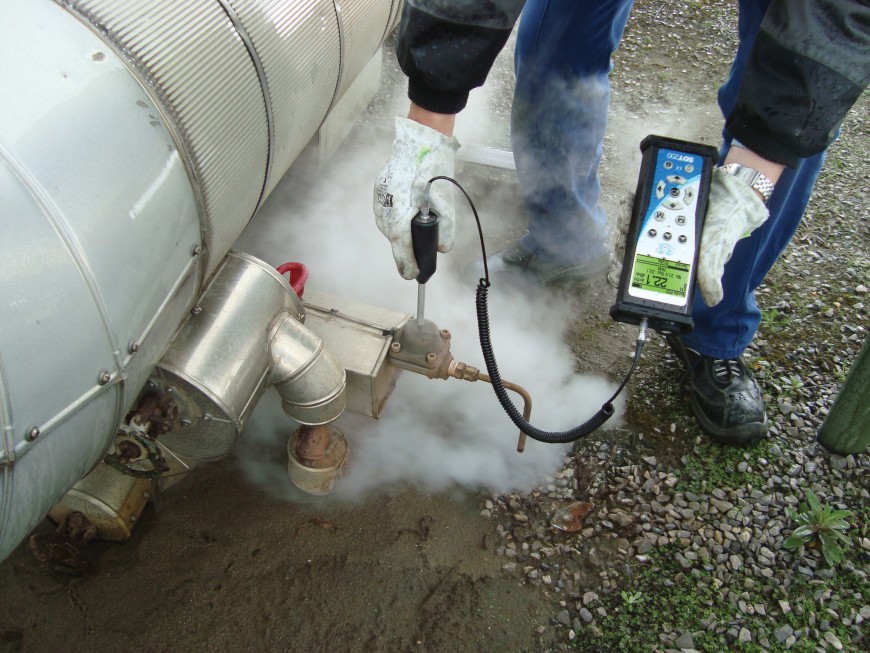ULTRASOUND TRAININGS
Kickstart your ultrasound journey
Ultrasound Essentials – Part 1 (UE1) is 25 bundled short courses designed to kickstart any ultrasound journey. The courses are delivered on-demand. UE1 is comprised of three learning categories.
Foundational Knowledge – information that lays the footings for understanding ultrasound and its significant role as the first line of defense against unplanned downtime, energy conservation, environmental sustainability, and employee safety.
Application Knowledge – information that connects the dots between foundational knowledge and how reliability professionals use ultrasound to advance reliability of their assets while creating a winning culture.
Hardware and Software Knowledge – engaging and empowering the skills required for inspectors to use SDT solutions in the field, and in the office.
Ultrasound training courses provide individuals with the knowledge and skills required to effectively perform ultrasound inspections and analysis for various applications. Here are some benefits of undergoing ultrasound training:
Understanding Ultrasound Principles:
Ultrasound training courses cover the fundamental principles of ultrasound, including wave propagation, reflection, attenuation, and Doppler effect. Participants gain a comprehensive understanding of how ultrasound technology works and how it can be applied for different inspection purposes.
Equipment Familiarization:
Participants in ultrasound training courses learn how to use ultrasound equipment, including ultrasound transducers, receivers, and data analysis software. They become familiar with the functions and operation of different ultrasound devices, settings, and features.
Inspection Techniques:
Ultrasound training courses teach participants various inspection techniques specific to different applications. They learn how to properly position the ultrasound transducer, scan surfaces, and interpret the acquired ultrasound signals. This includes techniques for thickness measurement, flaw detection, leak detection, bearing analysis, and more.
Data Interpretation and Analysis:
Participants learn how to interpret and analyze ultrasound data acquired during inspections. They become skilled in identifying anomalies, such as cracks, corrosion, delamination, cavitation, or leak points, based on the characteristics of ultrasound signals. Data analysis techniques and software usage are covered to assist in accurate interpretation.
Application-Specific Training:
Ultrasound training courses often offer specialized modules or tracks for specific industries or applications. For example, there may be dedicated training for ultrasound testing in electrical systems, mechanical equipment, HVAC systems, steam traps, or bearings. This focused training ensures participants gain expertise in their specific field of interest.
Safety Procedures:
Ultrasound training courses emphasize safety protocols and guidelines for conducting inspections. Participants learn about potential hazards associated with ultrasound testing and how to mitigate risks. Safety practices include considerations such as proper use of personal protective equipment and adherence to industry safety standards.
Quality Assurance:
Ultrasound training courses ensure that inspections are performed to industry standards and best practices. Professionals learn about applicable regulations, guidelines, and protocols specific to different applications. This adherence to standards ensures consistent and high-quality inspections, enhancing customer satisfaction and trust in the services provided.
Certification and Professional Development:
Completing ultrasound training courses and obtaining certifications, such as those offered by organizations like the American Society for Nondestructive Testing (ASNT), enhances professional credibility. It demonstrates a high level of expertise in ultrasound testing and inspection, opening up career opportunities and showcasing a commitment to continuous professional development.
Cost Savings and Efficiency:
Effective ultrasound inspections help identify defects, faults, or inefficiencies in equipment, structures, or systems at an early stage. This proactive approach enables timely maintenance actions, reducing the risk of costly breakdowns, optimizing maintenance schedules, and improving operational efficiency.
Expanded Career Opportunities:
Ultrasound training and certifications expand career opportunities for professionals involved in various industries, such as manufacturing, energy, aerospace, or maintenance. Having the necessary training and certifications in ultrasound testing positions individuals for roles such as NDT technicians, condition monitoring specialists, or reliability engineers.
Ultrasound training offers numerous benefits, including a deep understanding of ultrasound principles, equipment familiarization, inspection techniques, data interpretation, safety procedures, quality assurance, certification opportunities, cost savings, efficiency improvements, and expanded career prospects. By investing in ultrasound training, professionals can enhance their expertise in nondestructive testing and inspection, contributing to the reliability and safety of industrial processes.






